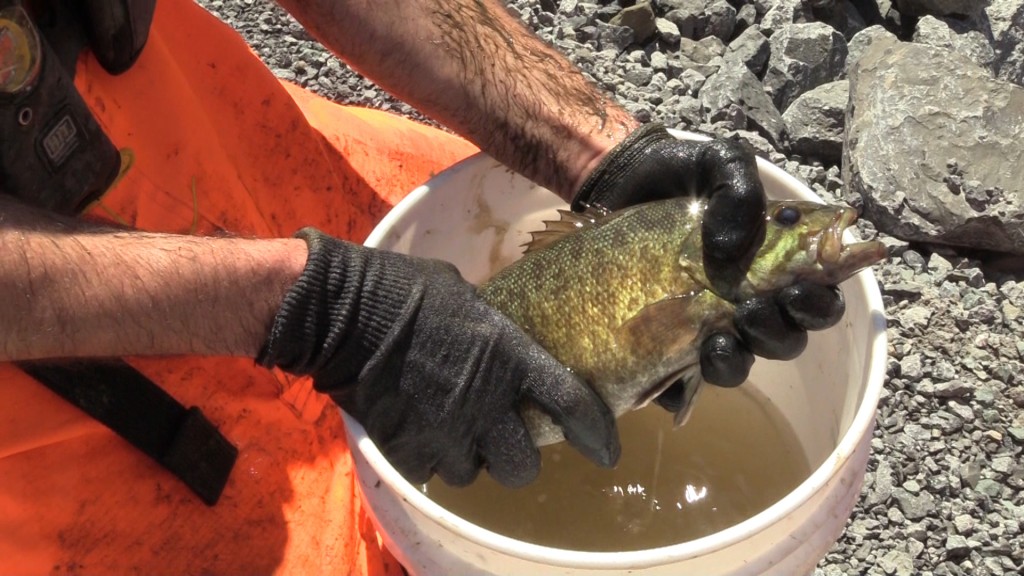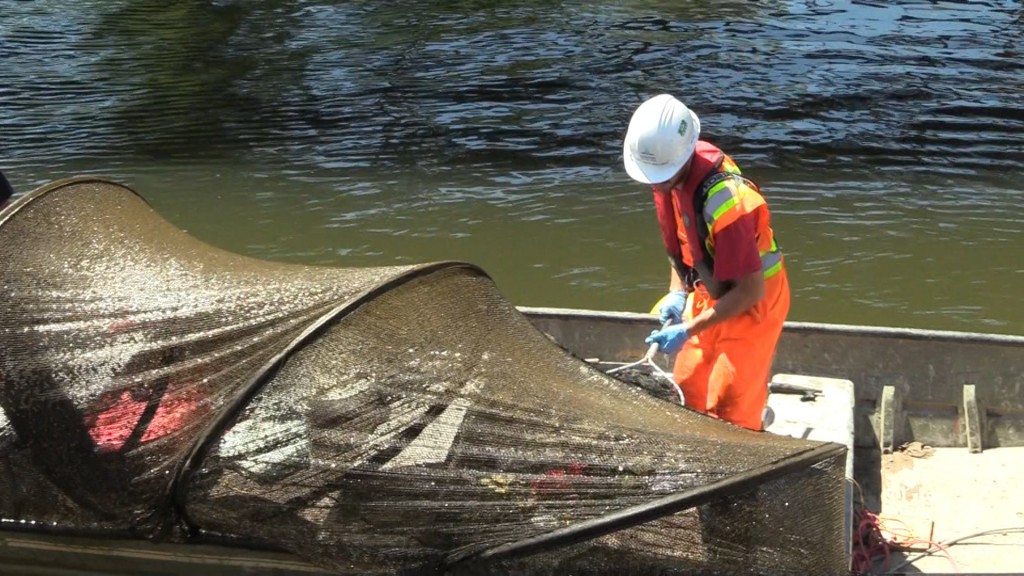News
Fishing in the West Jetty… to monitor the fishways
The last few weeks have seen biweekly fishing in the three fishways built into the west jetty (L’Île-des-Soeurs) last fall, allowing us to monitor the passages, which were designed to recreate optimal hydraulic conditions for fish runs. Building the fishways was an essential condition set out by Fisheries and Oceans Canada before construction of the west jetty could proceed last fall.
Quite a catch
Since spring started, more than 50 fish have been caught, and that is a satisfactory number, considering the traps are put in place twice a week, for a period covering less than 24 hours. These periodic catches let us know that these fishways are indeed passable and confirm the soundness of their design.
Among others species, seven lively basses of more than 30 cm in length (including one of 49 cm) found their way into our fyke nets, along with one American eel.
Among the species who wound up in our fyke nets, we identified a lively pair of basses of about 40 cm in length, as well as an American eel. Upon their capture, the specimens were identified and measured and their developmental stage (adult, juvenile) recorded. They were then released upstream so they could continue their journey. This tracking enables the environment team to validate the frequency with which the various species are using the fishways.
Since the activity began, about more than 30 fish have been counted, leading us to conclude that the passages are traversable and well designed.
Purpose of the fishways
The purpose of the three fishways is to not impede the apparent migration corridor and to allow fish access to their spawning grounds upstream of the west jetty.
The main purpose of two of the fishways is to facilitate the daily passage of smaller fish, yellow perch, pike and bass that travel upstream and downstream of the jetty, where the current is more manageable. Nets in hoops (fyke nets) are in place at the end of both passages to provide us with a sampling of the type of fish present. The fish use these two passages to reach their feeding and rest areas on either side of the jetty.
The third fishway, at the tip of the jetty, allows the great migrators to continue their journey. Inside this fishway is a metal cage to catch the larger fish. These are the strongest swimmers that move through the faster currents during their migration period.
Four species are of particular interest:
- lake sturgeon
- American shad
- American eel
- walleye
Sturgeon and eel are threatened species in Canada, while shad is listed among Quebec’s vulnerable species.
This year, the fish runs were slightly delayed, with water temperatures taking longer to rise and flow to slacken.
While the situation is not abnormal, it could extend fishing season until the end of June.

